
Roots
To stand on the threshold of inquiry, pondering how textured hair garnered respect before the brutalities of enslavement, one must first feel the silent hum of ancient pathways. This journey demands more than a mere glance at historical records; it asks for a deep listening to the soul of every curl, coil, and wave—a meditation on its inherent value, not as an afterthought, but as a primary language of self and community. This exploration of heritage is not an academic exercise alone; it is an act of reconnection, a gentle unwinding of narratives distorted by time and trauma, revealing the profound reverence once held for strands that grew skyward, tethering individuals to ancestral earth.
In the tapestry of pre-colonial African societies, hair was a vibrant form of communication, a living lexicon that spoke volumes without a single uttered sound. Each twist, each braid, each adornment conveyed messages of identity, status, and spiritual connection. The way one’s hair was styled could signify their age, marital status, wealth, or their position within a community.
It was a tangible link to one’s lineage, a declaration of belonging. The very structure of hair, its unique biology, was understood not as something to be tamed into submission but as a natural crown, holding wisdom and power.
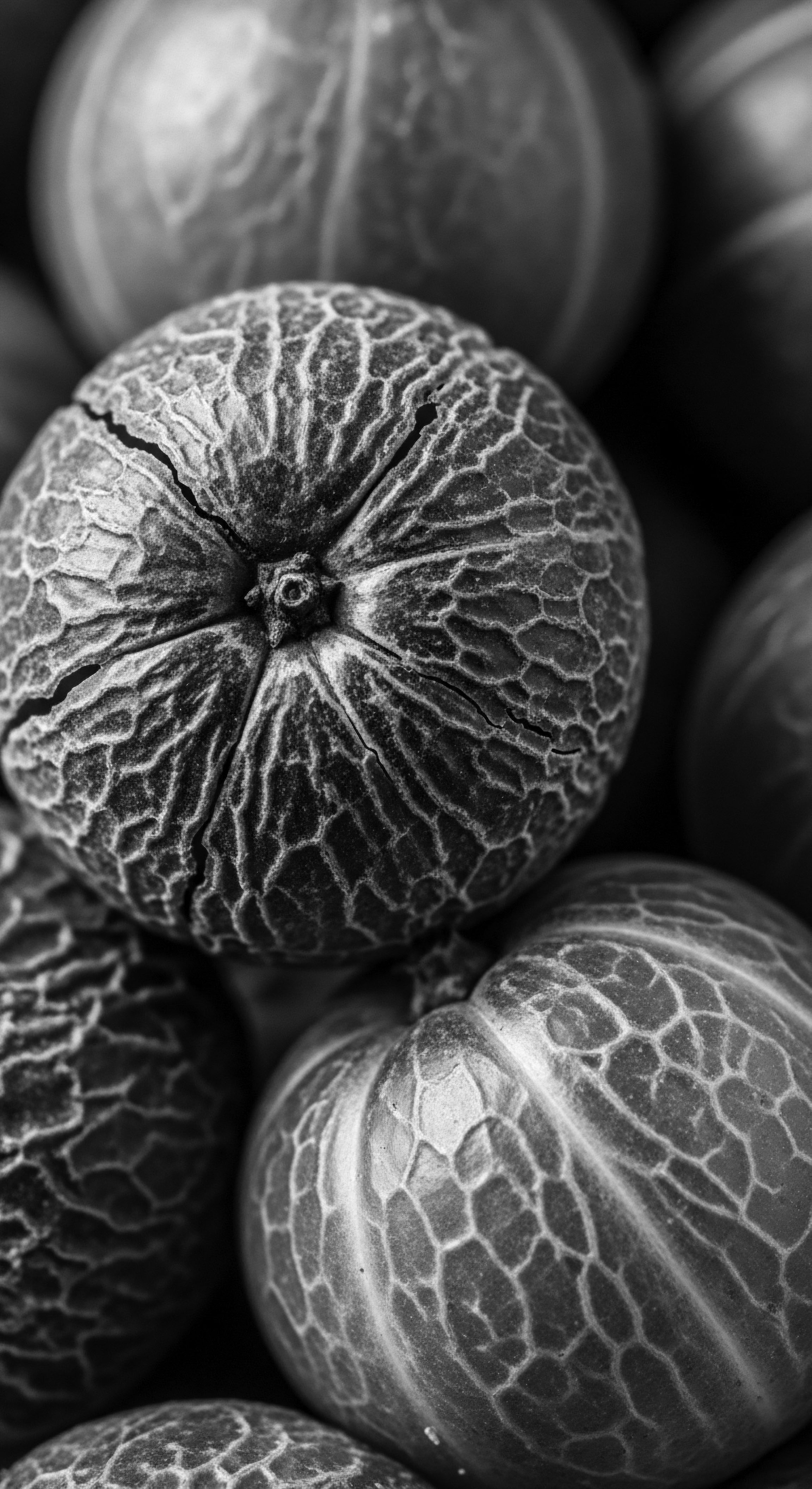
The Hair’s Intrinsic Form
Consider the elemental biology of textured hair, often categorized by its distinct curl patterns, from the tightest coils to the most open waves. Scientifically, the elliptical cross-section of the hair follicle and the way keratin proteins align contribute to these varied shapes. Before the shadow of forced labor, this biological reality was met with profound appreciation. Hair was seen as a living extension of the spirit, its inherent qualities celebrated rather than diminished.
This understanding was not rooted in scientific classification as we know it today, but in a profound, intuitive wisdom passed through generations. Ancient communities recognized the hair’s capacity for intricate styling, its ability to hold form, and its resilience—qualities deeply valued.
The language used to describe textured hair in these historical contexts was one of honor. It spoke of vitality, of spirit, of connection to the cosmos. There was no concept of ‘good’ versus ‘bad’ hair; there was simply hair, in all its wondrous forms, each possessing its own singular beauty and communicative power.
The systems of categorization, if they existed, were rooted in cultural recognition of diverse tribal styles and their associated meanings, not in a hierarchy of texture. This meant that the care and adornment of hair were deeply intertwined with personal and collective identity, a practice of deep respect for one’s physical self and one’s place within the larger group.
Before enslavement, textured hair was a revered communicator of identity, status, and spirit, its inherent qualities celebrated as a living crown.
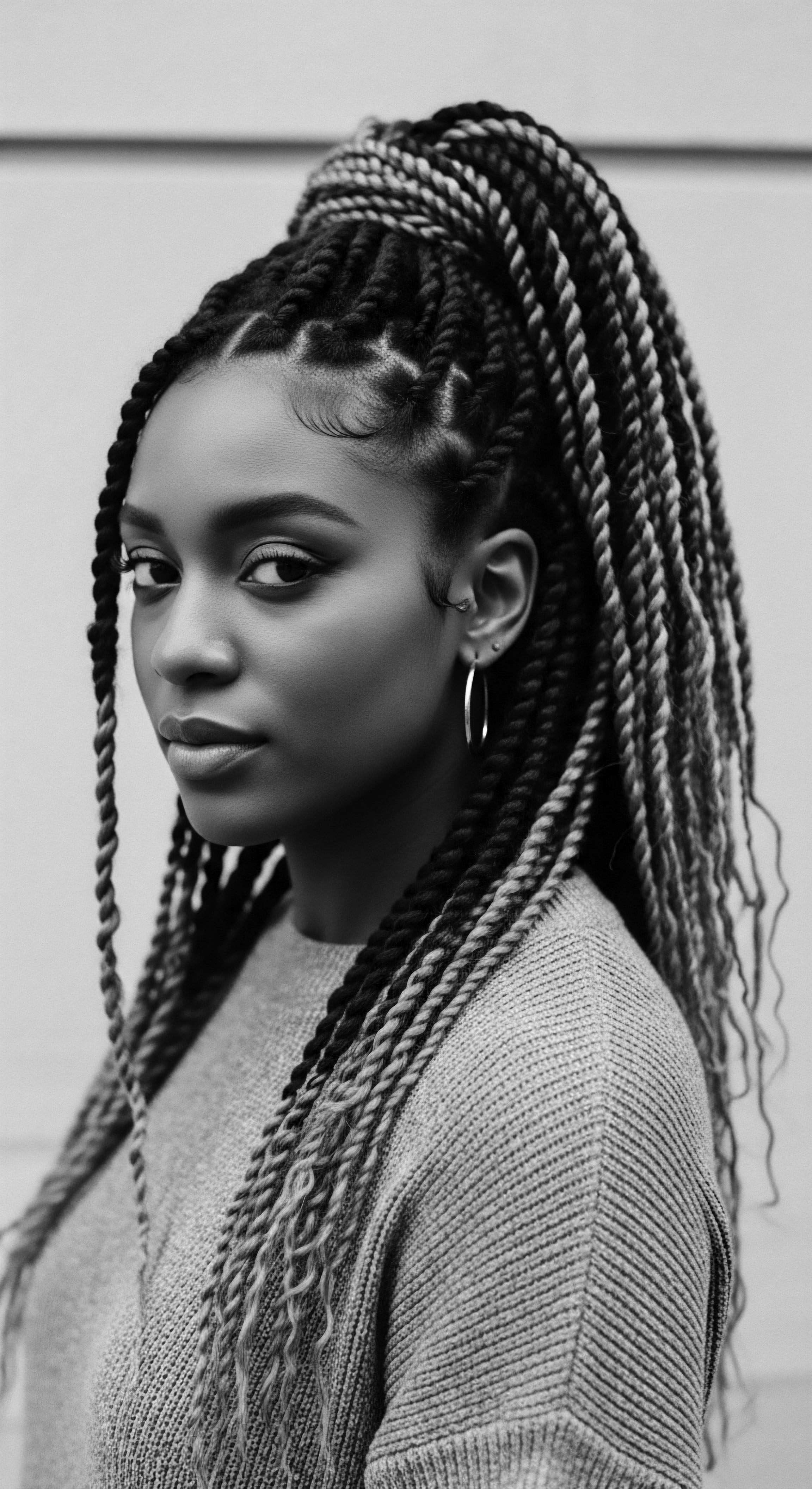
Anatomical Wisdom and Community Care
Hair anatomy, for ancestral communities, was understood through observed properties and lived experience. The hair’s natural inclination to coil, to create volume, to hold moisture in specific ways, shaped practical care. They knew, through generations of practice, that certain oils, plants, and techniques nurtured the hair’s natural inclinations. This knowledge formed the bedrock of care practices, ensuring health and vitality.
The ritual of hair care itself was often a communal act, a time for intergenerational bonding and knowledge exchange. It reinforced societal bonds and ensured that the customs and meanings tied to hair were transmitted to younger generations. Children learned from their elders how to cleanse, oil, style, and adorn, understanding that these actions were not mere grooming but acts of cultural preservation and personal expression. This collective approach to hair care underscores the deep respect for the physical and spiritual body within these communities.
| Aspect of Hair Structure |
| Pre-Enslavement African View Natural form, coils, and volume seen as inherent beauty and power. |
| Aspect of Hair Care Approach |
| Pre-Enslavement African View Holistic, communal, using indigenous botanicals and oils. |
| Aspect of Hair Social Role |
| Pre-Enslavement African View Visual language for identity, age, marital status, and social standing. |
| Aspect of Hair Spiritual Connection |
| Pre-Enslavement African View A conduit to the divine, a source of spiritual energy. |
| Aspect of Hair The indigenous appreciation of textured hair stemmed from a comprehensive understanding of its physical properties and its cultural functions. |
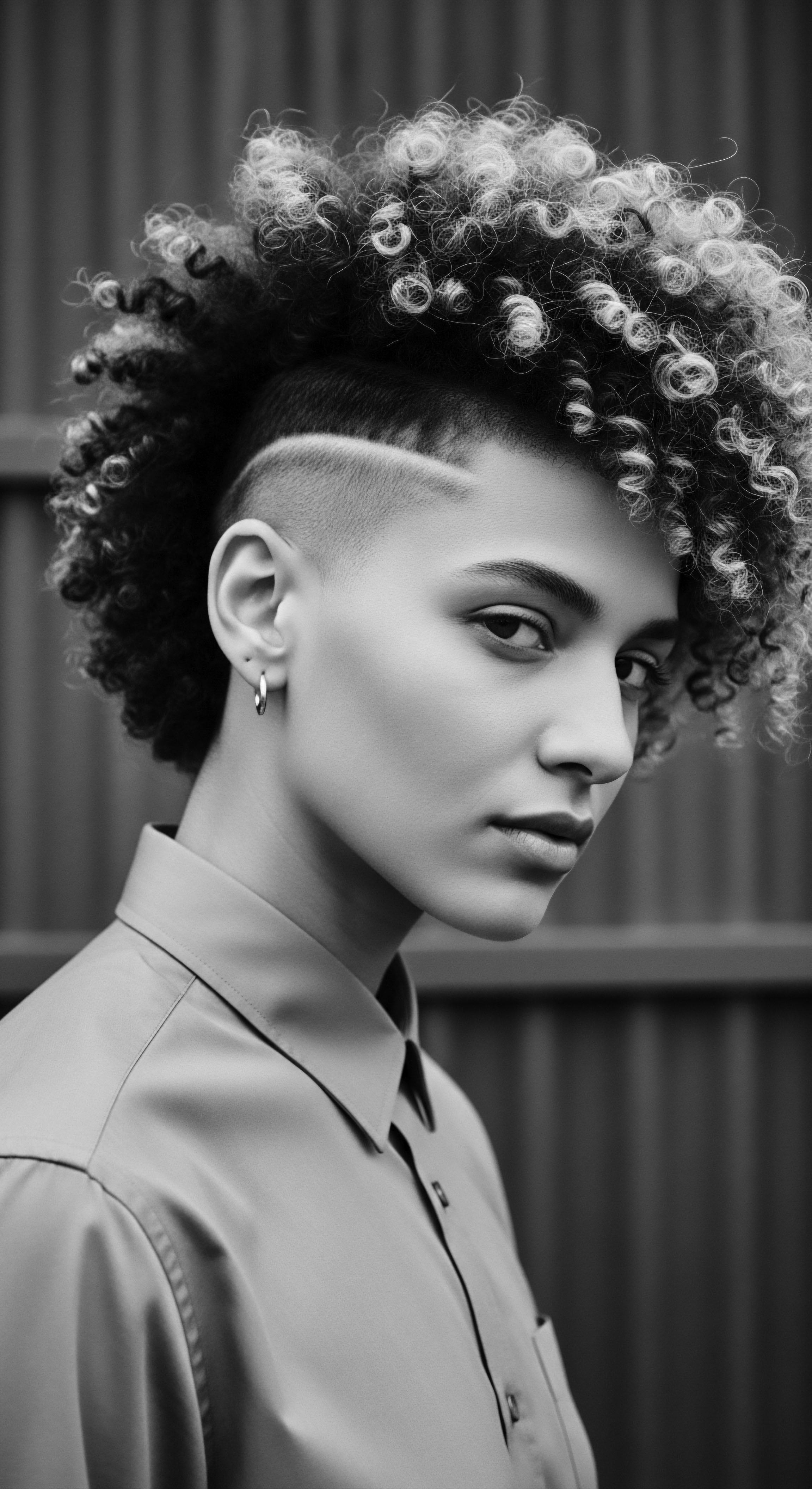
Ritual
The honor bestowed upon textured hair before enslavement was not an abstract concept; it was a living, breathing reality woven into daily life and significant ceremonies. It manifested through intricate styling practices, the crafting of specialized tools, and the transformative power of hair as a medium for self-expression and community narrative. These were not simply aesthetic choices; they were acts of reverence, each braid, each twist, each sculpted form holding layers of ancestral meaning. The meticulous attention paid to hair was a testament to its standing as a sacred and communicative part of the human form, speaking of heritage and belonging.

The Language of Adornment
Pre-colonial African societies across the continent communicated extensively through their hair. From the Wolof people in Senegal to the Yoruba in Nigeria, hair served as a nuanced visual lexicon. Braids, twists, and locs were not random arrangements; they were deliberate statements. A particular pattern could signify a person’s tribal affiliation, their age, their readiness for marriage, or even their family lineage.
For instance, among some West African groups, the arrangement of cornrows could indicate a woman’s marital status, while among the Fulani, hairstyles could display wealth, often decorated with cowrie shells and beads (Afriklens, 2024). This tradition of adornment was not about vanity, but about a deep, shared understanding of hair as a personal and public archive.

Styles as Social Signifiers
- Cornrows ❉ Beyond their aesthetic appeal, often served as practical and social markers. Ancient rock paintings in the Sahara dating to at least 3000 BCE depict cornrow patterns that held significance for tribal identity and spiritual beliefs (CurlyTreats, 2025).
- Bantu Knots ❉ A style with roots tracing back to the Bantu-speaking communities of Southern West Africa, they were more than decorative; they symbolized a rich connection to ancestral ways and community identity.
- Wigs and Elaborate Headdresses ❉ In ancient Egypt and the Kingdom of Kush, wigs crafted from human hair, wool, or plant fibers, often adorned with gold and beads, signaled high social status, wealth, and spiritual connection (Afriklens, 2024). The more detailed and decorated the style, the higher one’s standing.

Crafting Tools, Honoring Strands
The tools used for hair care and styling in these ancient communities were themselves objects of thoughtful design and cultural resonance. Combs carved from wood, bone, or ivory were not merely functional; they were often artistic creations, sometimes engraved with symbols that conveyed tribal identity, protection, or fertility (CurlyTreats, 2025). These implements were considered sacred, buried with their owners as companions in the afterlife, underscoring the profound respect for hair and its grooming process (CurlyTreats, 2025).
Beyond combs, various natural materials found in the local environment were adapted for hair care. Plant fibers, animal sinews, and indigenous clays were all utilized in the creation of styling aids and accessories. These materials were chosen not only for their practical properties but also for their symbolic connection to the land and its spiritual offerings. The very act of preparing these tools and substances was a ritual, a connection to the environment that sustained both body and spirit.
Hair’s aesthetic depth was a direct expression of heritage, with each stylistic choice serving as a communal dialogue.
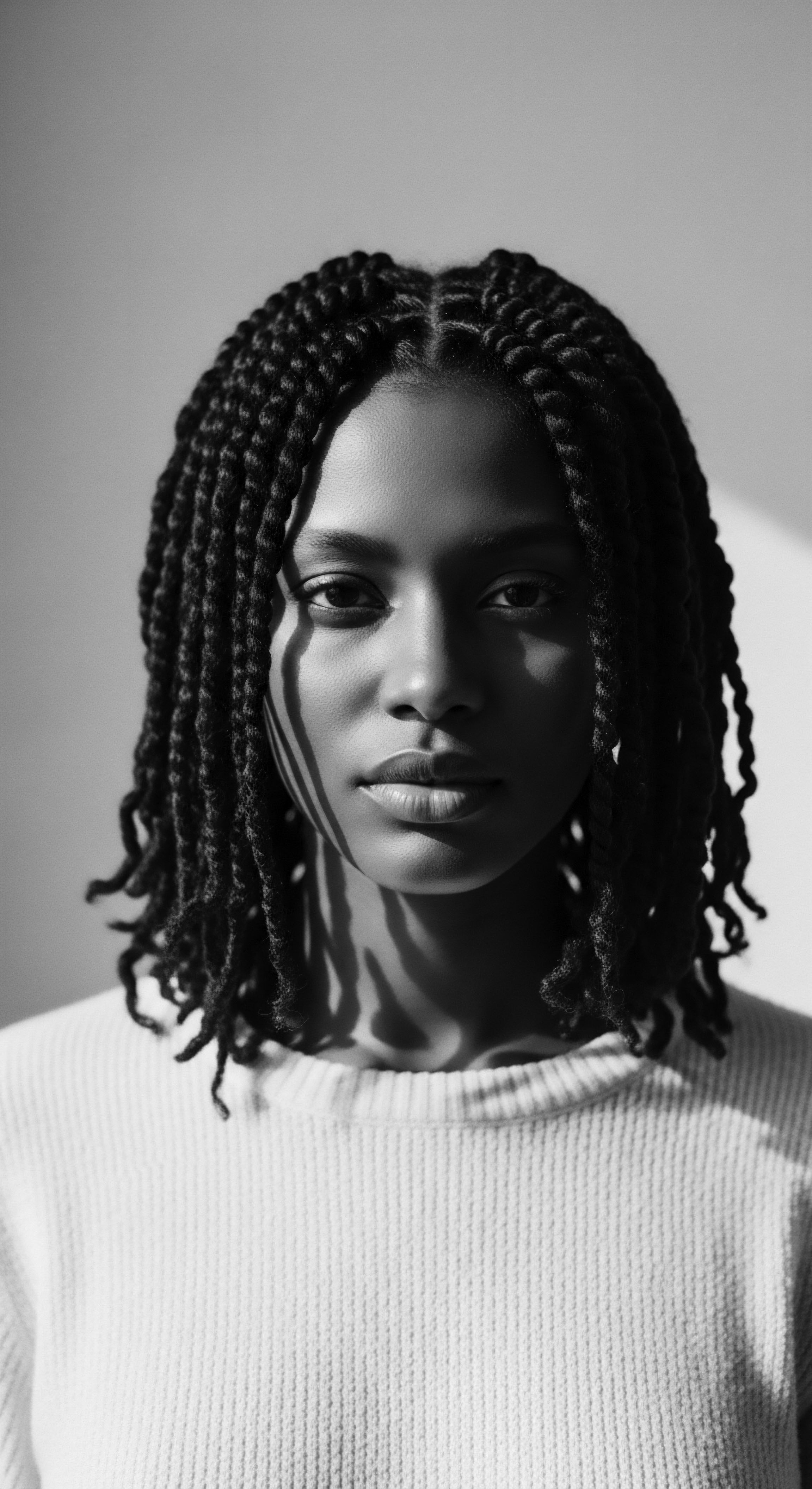
Hair as a Spiritual Conduit
In many African traditions, the head was understood as the most elevated point of the body, a conduit for spiritual energy and a portal through which spirits could pass to the soul (Know Your Hairitage, 2024). This belief imbued hair with powerful spiritual significance. The elaborate styling and adornment of hair were seen as ways to honor this connection to the divine and to ancestors. For instance, the Maasai people of East Africa held specific beliefs linking hair to spiritual energy (Afriklens, 2024).
The care of hair was therefore a sacred act, a form of spiritual hygiene. It was not uncommon for certain hairstyles to be reserved for priests, priestesses, or community leaders, signifying their spiritual authority and their role as intermediaries between the earthly and the divine. The meticulous maintenance of these styles was a reflection of respect for their spiritual duties and the power held within their tresses. Hair was a living symbol, a physical manifestation of connection to the unseen world, and its treatment was a sacred duty, passed down through generations.
| Styling Technique Cornrows (various patterns) |
| Cultural or Spiritual Significance Communication of identity, social status, age, marital status; could convey maps or spiritual pathways. |
| Region/People Across many African societies (e.g. Wolof, Mende, Yoruba, Nubian) |
| Styling Technique Wigs and Elaborate Hairpieces |
| Cultural or Spiritual Significance Status, wealth, religious devotion, connection to gods; protection from sun/lice. |
| Region/People Ancient Egypt, Kingdom of Kush |
| Styling Technique Fulani Braids (with adornments) |
| Cultural or Spiritual Significance Display of wealth, familial ties, marital status, age. |
| Region/People Fulani people (West Africa ❉ Niger, Mali, Senegal) |
| Styling Technique Loc-like styles (mud-rolled) |
| Cultural or Spiritual Significance Symbol of connection to the earth and ancestors; could signify rebellion. |
| Region/People Himba tribe (Namibia), Mau Mau fighters (Kenya) |
| Styling Technique These varied styling traditions underscored the integral role of hair in defining individual and collective identity before enslavement. |

Relay
The honor woven into textured hair before enslavement extended beyond mere aesthetics or social codes; it lived in the very fabric of daily care, in ancestral wisdom passed from elder to youth, and in problem-solving rooted deeply in the earth’s bounty. This holistic understanding of hair health, deeply steeped in heritage, offers profound insights into a time when respect for one’s tresses was inseparable from respect for one’s self, one’s community, and one’s place within the natural world. It was a philosophy of wellbeing, a communal agreement that the hair, as a crown, merited meticulous attention and nurturing.

Care Regimens from Deep History
Ancestral hair care regimens were comprehensive, built on a foundation of observation, experimentation, and centuries of accumulated botanical knowledge. These were not fleeting trends but enduring practices that adapted to local climates and available resources. The aim was always to sustain health, promote growth, and maintain the hair’s structural integrity. Communities understood that robust hair was a marker of vitality, a sign of prosperity, and a reflection of careful tending.
Consider the Himba people of Namibia, renowned for their distinctive ocher-coated locs. Their traditional hair paste, a mixture of clay, cow fat, and aromatic herbs, served multiple purposes ❉ sun protection, detangling, and a rich symbolic connection to their ancestral lands (22 Ayur, 2022). This practice, known as ‘otjize,’ demonstrates a nuanced approach to hair care that prioritized both protection from the elements and a deep cultural expression.
Similarly, the use of shea butter, derived from the nuts of the shea tree, was widespread across various African communities for its moisturizing and protective qualities against harsh environmental conditions (22 Ayur, 2022). These were not just ‘products’; they were gifts from the land, applied with knowledge passed down through generations.

How Did Ancient Practices Shield Textured Hair from Environmental Stress?
The ingenuity of ancestral hair care is evident in how it addressed environmental challenges. In sun-drenched regions, thick coatings of natural oils and clays protected hair from UV radiation and dehydration. The art of braiding, a skill practiced for millennia, offered a natural form of protective styling, keeping hair contained, minimizing tangling, and reducing exposure to dust and sun (Afriklens, 2024). These methods were not accidental; they were the culmination of deep ecological understanding and a practical wisdom that respected the hair’s delicate nature while allowing for active lives.
The focus was on strengthening the hair from its roots, providing moisture, and encouraging healthy growth. Ingredients like certain leaves, roots, and seeds were often ground into powders or extracted into oils, applied with precise techniques to maximize their benefits. These botanical remedies were the pharmacists of their day, providing solutions for dryness, breakage, and scalp health, all derived from the immediate environment.
Ancestral hair care was a deep conversation with nature, using indigenous botanicals to nurture textured hair’s resilience.

Nighttime Rituals and Protective Customs
The care of hair did not cease with the daylight hours. Nighttime rituals played a significant role in preserving hair health and maintaining elaborate styles. While the specific accessories like bonnets as we know them today may differ, the concept of protecting hair during rest was prevalent.
Headwraps, often worn for modesty or cultural expression during the day, could also serve as practical coverings at night, safeguarding styles and minimizing friction. The importance of protecting hair, even during sleep, speaks volumes about its perceived value and the communal commitment to its longevity and presentation.
Beyond the practical, these nighttime practices sometimes carried spiritual connotations, as the hair, being the highest point of the body, was considered a gateway for spiritual communication (EdwardAsare, 2021). Protecting it during sleep was thus also an act of spiritual safeguarding. These customs underline how fully integrated hair care was within the broader framework of ancestral wellness, encompassing both physical and spiritual dimensions of being.
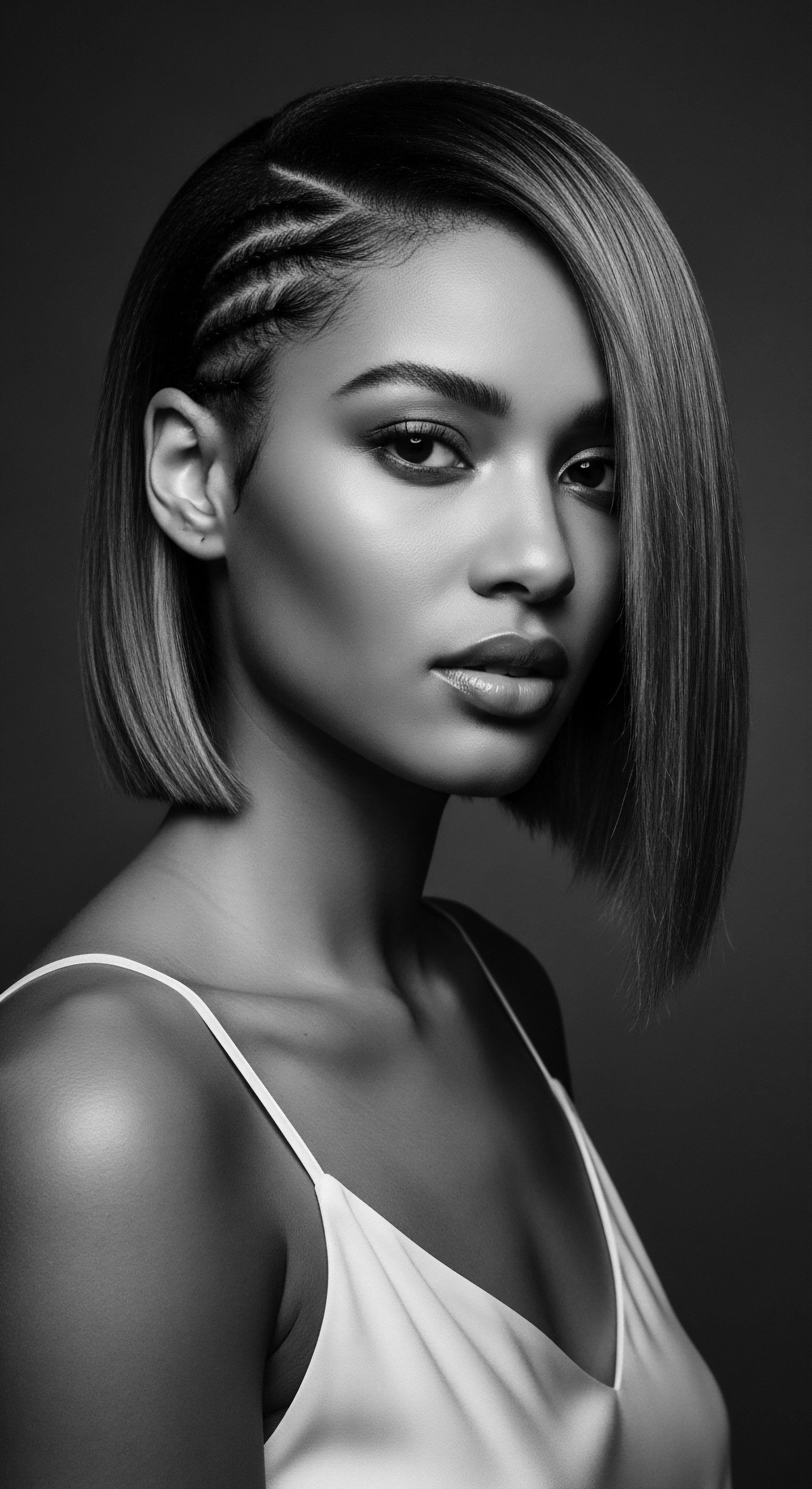
Traditional Solutions to Hair Challenges
Before the advent of modern cosmetic science, communities possessed a nuanced understanding of hair challenges and developed effective, natural remedies. Hair breakage, scalp dryness, and growth concerns were addressed with ingredients drawn directly from their surroundings.
A notable example is the Chebe powder from the Basara Arab women of Chad. This ancestral practice, passed down through generations, involves coating hair with a paste made from roasted and ground Chebe seeds (croton gratissimus), cherry seeds, and cloves (Premium Beauty News, 2024). Users attribute remarkable length retention and luster to this ritual, illustrating a sophisticated, long-standing system for promoting hair vitality. This is a powerful testament to the efficacy of traditional knowledge in maintaining hair health over generations.
Such practices were not isolated incidents but part of a widespread ancestral wisdom that saw hair not just as a physical attribute, but as a living entity requiring consistent, informed care. The dedication to these long, often time-consuming, rituals speaks to a profound respect for textured hair, a reverence utterly distinct from the later forces that sought to diminish its standing.
| Indigenous Ingredient Shea Butter |
| Primary Traditional Use Moisturizing, protective barrier against environmental damage. |
| Geographical Context (Examples) West and East Africa (e.g. Ghana, Nigeria) |
| Indigenous Ingredient Chebe Powder (from Chebe seeds) |
| Primary Traditional Use Hair length retention, strengthening, promoting luster. |
| Geographical Context (Examples) Chad (Basara Arab women) |
| Indigenous Ingredient Red Ochre and Animal Fat |
| Primary Traditional Use UV protection, detangling, cultural symbolism. |
| Geographical Context (Examples) Namibia (Himba people) |
| Indigenous Ingredient Henna (Lawsonia plant) |
| Primary Traditional Use Natural dye, conditioning, strengthening, scalp health. |
| Geographical Context (Examples) Ancient Egypt |
| Indigenous Ingredient These ingredients demonstrate the resourceful and effective care strategies rooted in local ecosystems and communal wisdom. |

Relay
To truly comprehend the respect shown for textured hair before enslavement, one must look beyond isolated practices and consider the profound, interconnected systems of meaning that shaped African societies. This understanding requires an academic lens, drawing on anthropology, history, and even early biological observation, to reveal how hair was a central pillar of culture, identity, and social order. The deep roots of this reverence offer powerful counterpoints to later narratives of denigration, underscoring hair’s inherent worth in these ancient worlds.
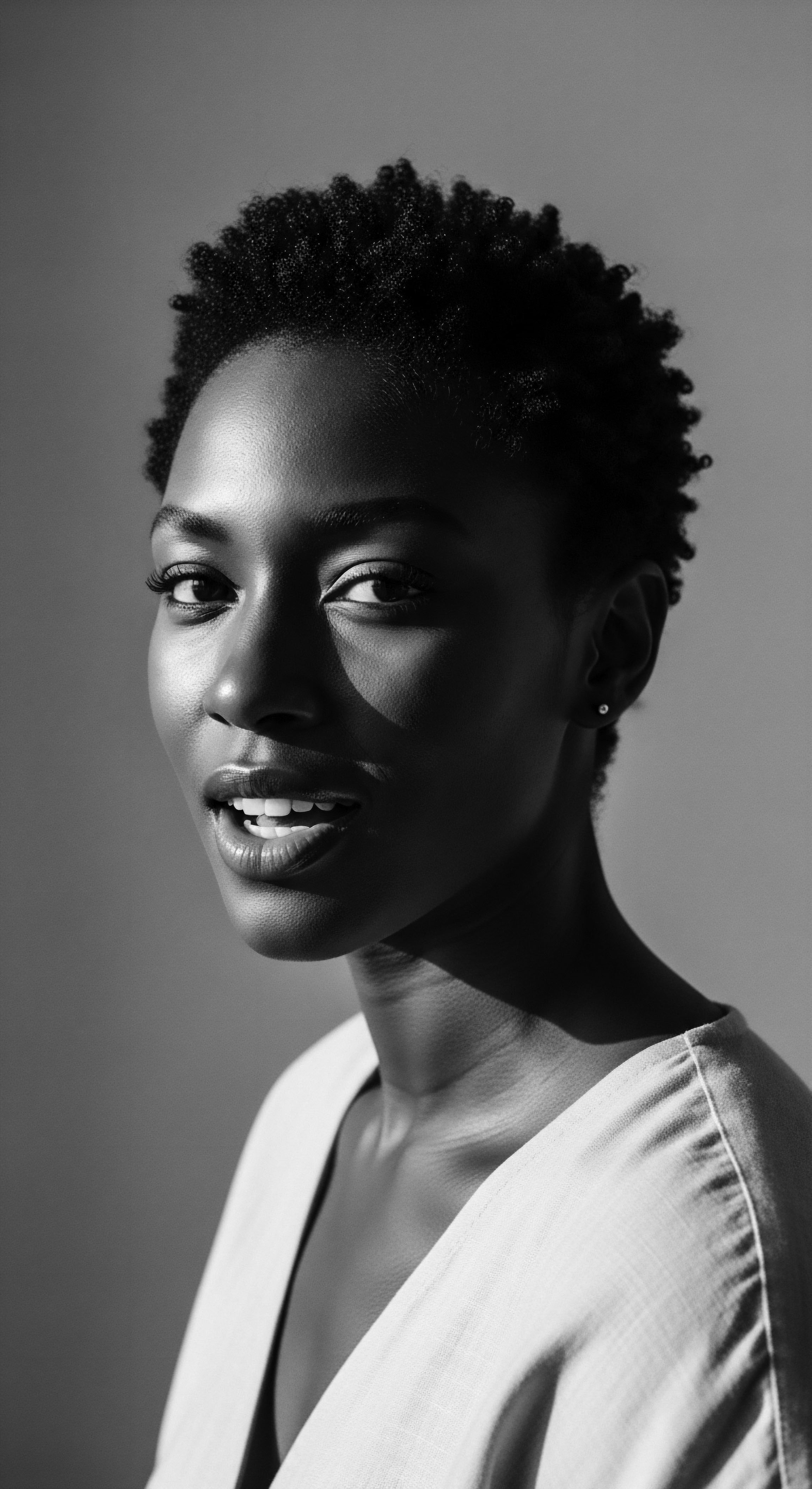
How Did Hair Shape Social Structures and Identity Before Enslavement?
Before the transatlantic slave trade violently disrupted communities, hair was a sophisticated communication system. It was a visual language that conveyed a person’s marital status, age, religion, wealth, social standing, and even their specific ethnic affiliation (BLAM UK CIC, 2022). The meticulous care and styling were not mere acts of personal grooming; they were expressions of collective identity and adherence to communal norms.
For example, among the Yoruba people of Nigeria, intricate hairstyles held significance related to femininity, marriage, and rites of passage, with specific braids marking a woman’s marital status or her transition to adulthood (Afriklens, 2024). This demonstrates how hair actively participated in the creation and maintenance of social cohesion.
The very act of hair grooming was often a communal affair, a time for social interaction, storytelling, and the transmission of cultural knowledge across generations (BLAM UK CIC, 2022). These sessions strengthened familial bonds and reinforced community ties. Hairdressers held significant positions within society, possessing not only technical skill but also a deep understanding of the cultural and spiritual significance of each style.
Their artistry was a reflection of the community’s values, preserving complex designs that spoke of lineage, achievement, and spirituality. This collective engagement solidified hair’s standing as a respected and integral aspect of life.
Consider the profound symbolism in ancient Egypt, where hair and wigs were indicators of social status, divinity, and power. Elaborate wigs, often made of human hair and adorned with gold thread, were worn by the elite and royalty, signifying their wealth and prestige. Priests would shave their heads to symbolize spiritual purity and devotion to the gods, while children often wore a single “sidelock of youth,” signifying their connection to the deity Horus and their protection (Bebrų Kosmetika, 2024).
An archaeological study from 2019, cited in research on ancient Egyptian hair symbolism, found that over 30% of surveyed ancient Egyptian temples showed evidence of burning hair during religious rites as an offering to the gods, a practice spanning social classes (Bebrų Kosmetika, 2024). This highlights a widespread and deeply embedded spiritual reverence for hair.

The Spiritual Dimension of Textured Hair
Across various African cultures, hair was not just a physical feature; it was considered a sacred part of the body, a spiritual antenna that connected individuals to the divine and to their ancestors. The top of the head, where hair grows, was often regarded as the entry point for spiritual energy (Afriklens, 2024). This belief elevated hair beyond mere appearance, positioning it as a direct link to the unseen world and a repository of personal and ancestral power.
This spiritual connection manifested in various ways. Hair might be styled in specific patterns for rituals, ceremonies, or to signify a person’s spiritual role within the community. In times of mourning, particular hair practices were observed, such as throwing ashes or dirt over the head, or even removing locks of hair, as a way to express grief and respect for the departed.
The hieroglyphic sign for mourning in ancient Egypt, for example, consisted of three locks of hair, alluding to the myth of Isis cutting her hair in grief for Osiris (ResearchGate, 2024). Such practices reveal a nuanced and deeply felt understanding of hair’s spiritual resonance.

The Disruption of Reverence and Its Echoes
The systematic shaving of hair by enslavers upon capture and during the Middle Passage was a deliberate, brutal act of dehumanization. This was a calculated strategy to strip enslaved Africans of their identity, sever their cultural and spiritual ties, and erase the profound meanings embedded in their hairstyles (BLAM UK CIC, 2022). Europeans, having traded with Africans for centuries, were well aware of the deep cultural and personal significance of these diverse hairstyles (Érudit, 2021). The forcible removal of hair was thus a direct assault on their sense of self and community.
However, the resilience of textured hair heritage is a powerful testament to the enduring respect its owners held for it. Even under extreme duress, enslaved Africans found ways to preserve their hair traditions. Cornrows, for instance, became a clandestine tool of resistance ❉ enslaved women braided rice seeds into their hair as a means of survival, carrying sustenance for future planting (OkayAfrica, 2024). Others fashioned cornrows into intricate maps, guiding paths to freedom, transforming their hair into a living blueprint of liberation (BLAM UK CIC, 2022).
These actions, born of unimaginable hardship, illustrate the unyielding spirit and the profound, unbreakable connection to their hair’s heritage. The resilience inherent in textured hair itself became a symbol of resistance, a quiet defiance against forced assimilation.

Reflection
The journey through the ancestral reverence for textured hair, before the shadow of enslavement, reveals a wisdom that speaks across time. It is a testament to hair’s intrinsic standing not merely as a biological attribute, but as a living archive, a sacred conduit, and a potent marker of identity and heritage. Roothea’s ‘Soul of a Strand’ ethos finds its deepest echoes in these ancient rhythms of care, community, and profound respect. The narrative of textured hair is not one that begins with struggle, but rather with inherent beauty, power, and a deep, ancestral honoring.
This heritage, spanning millennia and continents, shows us how intricately hair was woven into the social, spiritual, and artistic fabric of African societies. It was a language of belonging, a chronicle of life’s passages, a visible declaration of spirit. The knowledge passed down, from the meticulous crafting of tools to the intuitive understanding of botanicals, underscores a holistic approach to wellbeing that recognized the interconnectedness of body, spirit, and community.
Even in the face of subsequent attempts to erase this reverence, the legacy of textured hair endured. The resilience of these traditions, quietly maintained and ingeniously adapted, speaks to an unbreakable spirit. To grasp this history is to walk hand-in-hand with ancestors, understanding that the strength and beauty of textured hair today are not modern discoveries, but rather a profound continuation of a timeless heritage, a living, breathing testament to its enduring worth.
References
- Afriklens. (2024, November 1). African Hairstyles ❉ Cultural Significance and Legacy.
- 22 Ayur. (2022). The Ancient Natural Ways of Hair Care Across Continents.
- Bebrų Kosmetika. (2024, August 23). Hair as Power ❉ Egyptian and Greek Symbolism.
- BLAM UK CIC. (2022, September 15). The history of Black Hair.
- CurlyTreats. (2025, February 8). Afro comb ❉ the cultural and political legacy behind this iconic hair tool.
- EdwardAsare. (2021, April 17). THE ROLE OF HAIR IN ANCIENT AFRICAN CULTURES.
- Érudit. (2021, April 19). The importance of hair in the identity of Black people – Nouvelles pratiques sociales.
- Know Your Hairitage. (2024). African Culture.
- OkayAfrica. (2024). Reclaiming Tradition ❉ How Hair Beads Connect Us to Our History.
- Premium Beauty News. (2024, July 3). Ancestral hair-paste ritual gains new life in Chad.
- ResearchGate. (2024, August 10). Role of the Hair in Ancient Egypt.
